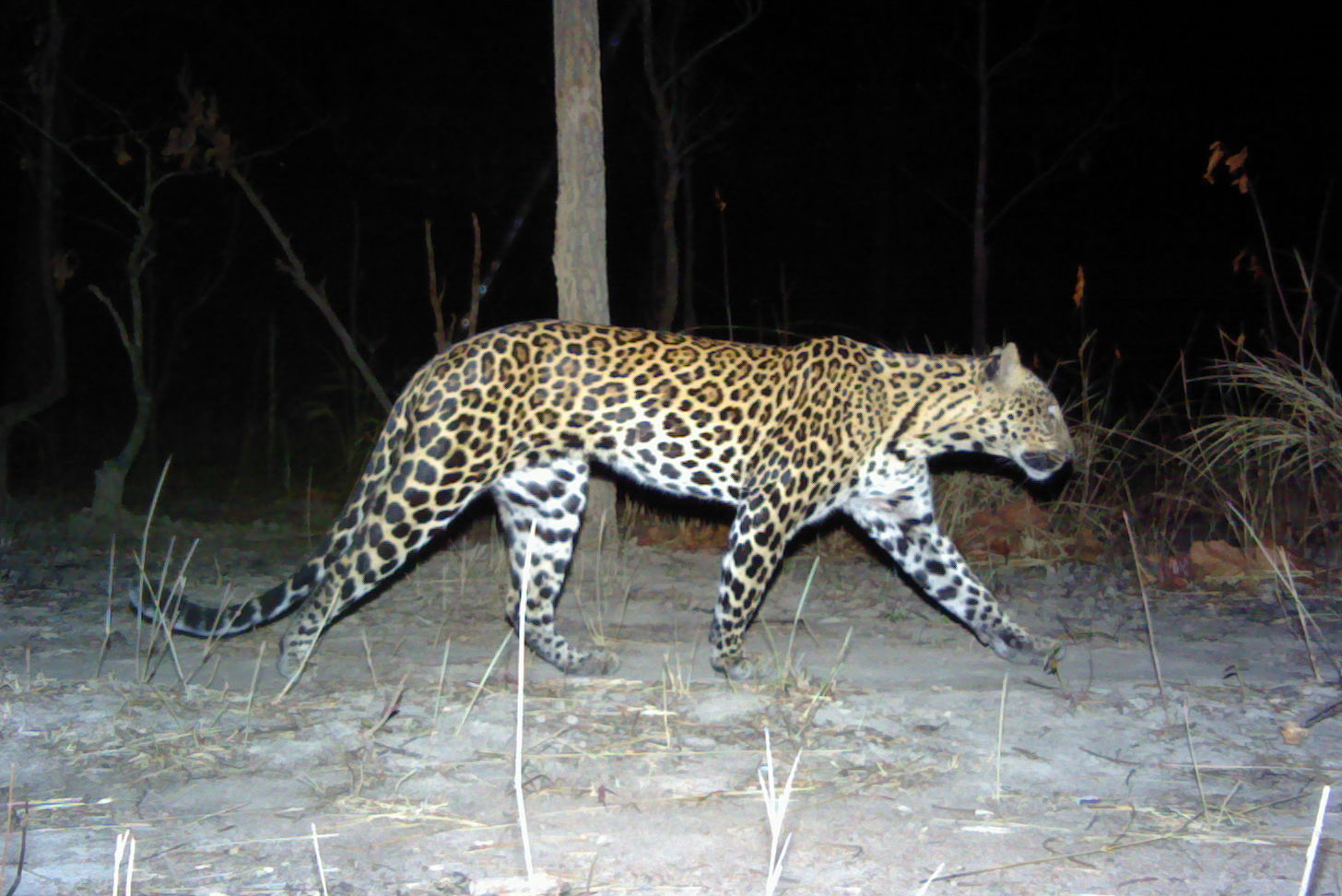The Indochinese leopard is struggling to survive.
Once widespread across southeast Asia, the leopard subspecies has been wiped out from much of its habitat, and now occurs only in six percent of its historical range, a new study published in Biological Conservation has found.
"Nobody was expecting this," co-author Jan F. Kamler, Southeast Asia Leopard Program Coordinator for Panthera, the global wild cat conservation organization, told Mongabay. "All had assumed that the leopard was still quite common throughout the forests of Southeast Asia. Conservationists had recognized that tigers had decreased dramatically throughout all of Southeast Asia, but they hadn't yet realized a similar range collapse occurred for the leopard as well."
 Male Indochinese leopard from eastern Cambodia. Photo courtesy of Panthera, WWF Cambodia, and Forestry Administration.
Male Indochinese leopard from eastern Cambodia. Photo courtesy of Panthera, WWF Cambodia, and Forestry Administration. After reviewing data from 146 wildlife surveys spanning across the last 20 years, an international team of researchers have found that an estimated 973 to 2503 Indochinese leopards remain in the wild. Only 409 to 1051 individuals are breeding adults.
Country-wise data revealed that the Indochinese leopard is now extinct in Singapore and functionally extinct in Laos and Vietnam, with no viable populations remaining in the wild. The subspecies is also nearly extinct in Cambodia and China.
The leopard now occupies only eight percent of its historical range in Cambodia, the study found, with just one remaining viable population in the Eastern Plains Landscape. Similarly, in China, the leopard now occurs only in 0.4 percent of its historical range. The leopard's habitat in Malaysia, Myanmar and Thailand has also shrunk dramatically, the study found.
In fact, only two major strongholds remain for the Indochinese leopard, the scientists conclude — one in Peninsular Malaysia, and the other in the Northern Tenasserim Forest Complex on Thailand-Myanmar border — making them the top two priority sites for leopard conservation. The team has also identified eastern Cambodia as a third priority site, "because of its uniqueness and high conservation value."
Given this dramatic decline of the Indochinese leopard, researchers recommend re-classifying this subspecies from Vulnerable to Endangered on the IUCN Red List. Doing this could help in imposing harsher penalties and improve protection of this subspecies, according to Kamler.
"Whereas now the fine for killing a leopard might result in a small fine, if they become officially listed as Endangered by the IUCN, the penalties for killing them should increase to prison time and large fines — which hopefully will be a stronger deterrent against killing them," Kamler said. "Secondly, endangered species get more exposure and conservation money than other species. Consequently, NGOs can begin listing the Indochinese leopard as priority species in the region, thereby better promoting their conservation."
 Melanistic male Indochinese leopard from Malaysia, with spots illuminated using infrared light. Photo courtesy of DWNP, Panthera, and Rimba.
Melanistic male Indochinese leopard from Malaysia, with spots illuminated using infrared light. Photo courtesy of DWNP, Panthera, and Rimba. The team believes that the major threat to the Indochinese leopard is poaching for illegal wildlife trade. This is because leopards are increasingly being used as substitutes for tiger parts, Kamler said, with the price of leopard parts rising as tiger parts become scarce.
"Across large parts of Southeast Asia, particularly in Laos, Cambodia, and Vietnam, there is an epidemic of snaring, and this appears to be the primarily factor driving leopards to extinction in those areas," Kamler added.
A previous study found that overall, leopards have lost more than 75 percent of their historic habitat. The fate of the Indochinese leopard, too, depends on securing the protection of the last remaining populations. And this means that the three priority sites identified in the study need to be especially secured from additional poaching, Kamler said. This would include, for example, removal of a large number of snares that have already been set in these areas.
The team hopes that the study will prompt governments and NGOs to take immediate action to prevent further loss of leopard habitat.
"In response to this conservation crisis, Panthera just expanded their Leopard Program to include Southeast Asia, and already this year we're establishing long-term monitoring nodes in the last remaining Indochinese leopard populations in Southeast Asia, which includes sites in Cambodia, Malaysia, Thailand, and potentially Myanmar," Kamler said. "Besides establishing nodes to keep track of leopard numbers with camera traps, we're working with governments and local NGOs to improve enforcement at priority sites in southeast Asia."
CITATION:
Article published by Shreya Dasgupta on 2016-08-10.
Source: Indochinese leopard has disappeared from 94% of its historical range
No comments:
Post a Comment